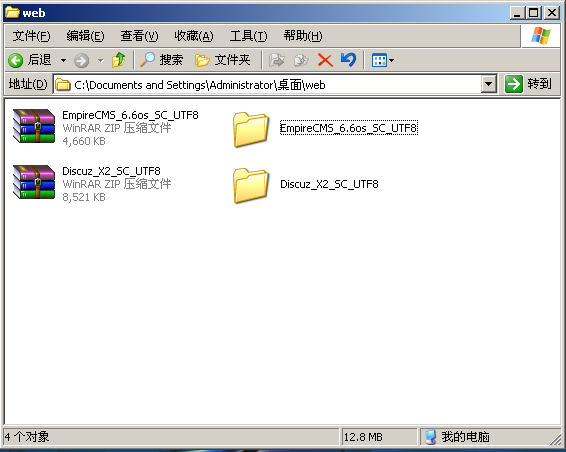RxJava之Scheduler (二)
SingleScheduler是RxJava2新增的Scheduler。SingleScheduler中有一个属性叫作executor,它是使用AtomicReference包装的ScheduledExecutorService。
补充:AtomicReference类的作用:AtomicReference则对应普通的对象引用,即保证你在修改对象引用时的线程安全性;对” 对象 ”进行原子操作
final AtomicReference<ScheduledExecutorService> executor = new AtomicReference<ScheduledExecutorService>(); 复制代码
在SingleScheduler构造函数中,Executor会调用lazySet().
/**
* @param threadFactory thread factory to use for creating worker threads. Note that this takes precedence over any
* system properties for configuring new thread creation. Cannot be null.
*/
public SingleScheduler(ThreadFactory threadFactory) {
this.threadFactory = threadFactory;
executor.lazySet(createExecutor(threadFactory));
}
复制代码
************ 分割线 ************
其中**lazySet()**是 AtomicReference
中的方法,用于修改引用对象:
// AtomicRefence类
/**
* Sets to the given value.
*
* @param newValue the new value
*/
public final void set(V newValue) {
value = newValue;
}
/**
* Eventually sets to the given value.
*
* @param newValue the new value
* @since 1.6
*/
public final void lazySet(V newValue) {
U.putOrderedObject(this, VALUE, newValue);
}
复制代码
AtomicReferences中set()和lazySet()区别: set()
会 立刻修改旧值
,别的线程可以立刻看到更新后的值;而 lazySet()
不会立刻(但是 最终会
)修改旧值,别的线程看到新值的时间会延迟一些。
************ 分割线 ************
它的createExecutor()用于创建工作线程,可以看到通过SchedulerPoolFactory来创建ScheduledExecutorService。
// SingleScheduler类
static ScheduledExecutorService createExecutor(ThreadFactory threadFactory) {
return SchedulerPoolFactory.create(threadFactory);
}
复制代码
通过SchedulerPoolFactory类的create(ThreadFactory factory)来创建单线程的线程
// SchedulerPoolFactory类
/**
* Creates a ScheduledExecutorService with the given factory.
* @param factory the thread factory
* @return the ScheduledExecutorService
*/
public static ScheduledExecutorService create(ThreadFactory factory) {
// 创建单线程
final ScheduledExecutorService exec = Executors.newScheduledThreadPool(1, factory);
if (exec instanceof ScheduledThreadPoolExecutor) {
ScheduledThreadPoolExecutor e = (ScheduledThreadPoolExecutor) exec;
POOLS.put(e, exec);
}
return exec;
}
复制代码
在SingleScheduler中,每次使用ScheduledExecutorService时,其实是使用executor.get()。所以说,single拥有一个线程单例。
SingleScheduler会创建一个ScheduledWorker,ScheduledWorker使用JDK的ScheduledExecutorService作为executor。 下面是ScheduledWorker的schedule()方法,使用ScheduledExecutorService的submit()或schedule()来执行runnable。
@NonNull
@Override
public Disposable schedule(@NonNull Runnable run, long delay, @NonNull TimeUnit unit) {
if (disposed) {
return EmptyDisposable.INSTANCE;
}
Runnable decoratedRun = RxJavaPlugins.onSchedule(run);
ScheduledRunnable sr = new ScheduledRunnable(decoratedRun, tasks);
tasks.add(sr);
try {
Future<?> f;
if (delay <= 0L) {
/**
* 立即执行则执行submit()方法
* Submits a value-returning task for execution and returns a
* Future representing the pending results of the task. The
* Future's {@code get} method will return the task's result upon
* successful completion.
*/
f = executor.submit((Callable<Object>)sr);
} else {
/**
* 需延迟执行,则执行schedule()方法
* Creates and executes a ScheduledFuture that becomes enabled after the
* given delay.
*/
f = executor.schedule((Callable<Object>)sr, delay, unit);
}
sr.setFuture(f);
} catch (RejectedExecutionException ex) {
dispose();
RxJavaPlugins.onError(ex);
return EmptyDisposable.INSTANCE;
}
return sr;
}
复制代码
2.ComputationScheduler
ComputationScheduler使用FixedSchedulerPool作为线程池,并且FixedSchedulerPool被AtomicReference包装了一下。
从ComputationScheduler的源码中可以看出, MAX_THREADS
是 CPU的数目
。 FixedSchedulerPool
可以理解为拥有 固定数量的线程池
(有点类似线程池中的FixedThreadPool),数量为MAX_THREADS。
static {
MAX_THREADS = cap(Runtime.getRuntime().availableProcessors(), Integer.getInteger(KEY_MAX_THREADS, 0));
...
}
static int cap(int cpuCount, int paramThreads) {
return paramThreads <= 0 || paramThreads > cpuCount ? cpuCount : paramThreads;
}
复制代码
ComputationScheduler类会创建一个EventLoopWorker。
@NonNull
@Override
public Worker createWorker() {
return new EventLoopWorker(pool.get().getEventLoop());
}
复制代码
其中getEventLoop()是FixedSchedulerPool中的方法,返回了FixedSchedulerPool中的一个PoolWorker。
注: FixedSchedulerPool
和 EventLoopWorker
都为 ComputationScheduler
的内部类
// EventLoopWorker类中的方法
public PoolWorker getEventLoop() {
int c = cores;
if (c == 0) {
return SHUTDOWN_WORKER;
}
// simple round robin, improvements to come
return eventLoops[(int)(n++ % c)];
}
复制代码
PoolWorker继承自NewThreadWorker,也是线程数为1的ScheduledExecutorService。
3.IoScheduler
IoScheduler使用CachedWorkerPool作为线程池,并且CacheWorkerPool也被AtomicReference包装了一下。 CachedWorkerPool是基于RxThreadFactory这个ThreadFactory来创建的。
static {
...
WORKER_THREAD_FACTORY = new RxThreadFactory(WORKER_THREAD_NAME_PREFIX, priority);
...
NONE = new CachedWorkerPool(0, null, WORKER_THREAD_FACTORY);
...
}
复制代码
在RxThreadFactory中,由prefix和incrementAndGet()来创建新线程的名称
后续补充,先写到这儿











![[HBLOG]公众号](https://www.liuhaihua.cn/img/qrcode_gzh.jpg)

